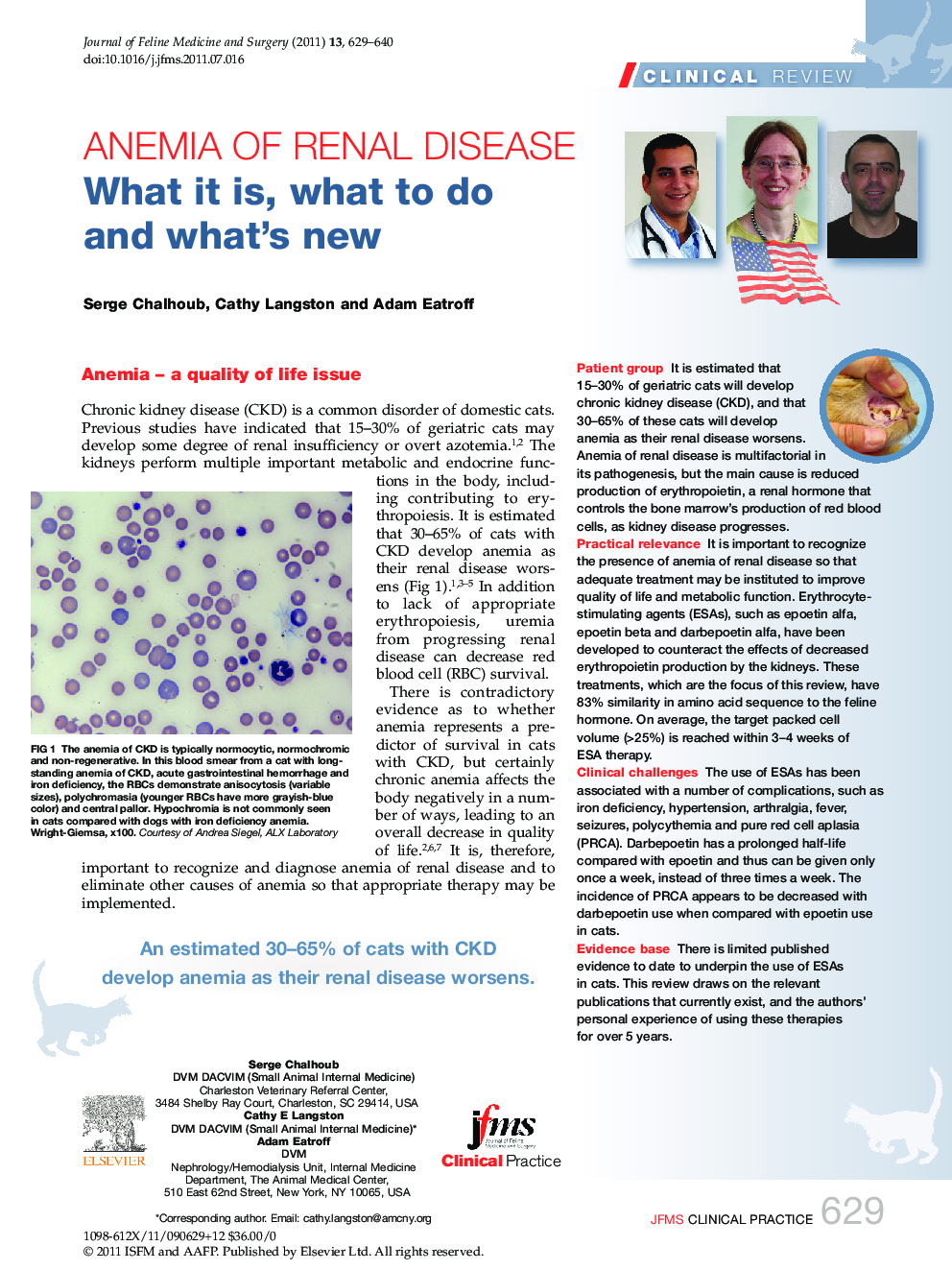| Article ID | Journal | Published Year | Pages | File Type |
|---|---|---|---|---|
| 2397673 | Journal of Feline Medicine & Surgery | 2011 | 12 Pages |
Patient groupIt is estimated that 15–30% of geriatric cats will develop chronic kidney disease (CKD), and that 30–65% of these cats will develop anemia as their renal disease worsens. Anemia of renal disease is multifactorial in its pathogenesis, but the main cause is reduced production of erythropoietin, a renal hormone that controls the bone marrow's production of red blood cells, as kidney disease progresses.Practical relevanceIt is important to recognize the presence of anemia of renal disease so that adequate treatment may be instituted to improve quality of life and metabolic function. Erythrocyte-stimulating agents (ESAs), such as epoetin alfa, epoetin beta and darbepoetin alfa, have been developed to counteract the effects of decreased erythropoietin production by the kidneys. These treatments, which are the focus of this review, have 83% similarity in amino acid sequence to the feline hormone. On average, the target packed cell volume (>25%) is reached within 3–4 weeks of ESA therapy.Clinical challengesThe use of ESAs has been associated with a number of complications, such as iron deficiency, hypertension, arthralgia, fever, seizures, polycythemia and pure red cell aplasia (PRCA). Darbepoetin has a prolonged half-life compared with epoetin and thus can be given only once a week, instead of three times a week. The incidence of PRCA appears to be decreased with darbepoetin use when compared with epoetin use in cats.Evidence baseThere is limited published evidence to date to underpin the use of ESAs in cats. This review draws on the relevant publications that currently exist, and the authors’ personal experience of using these therapies for over 5 years.
